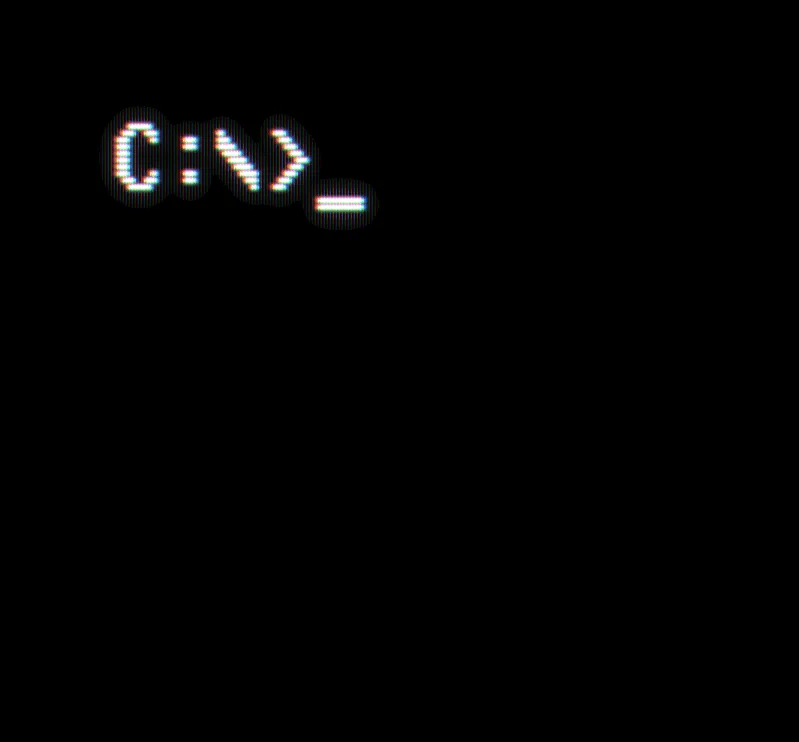Moros Protocol Review
Tell me you grew up with boomer shooters without telling me you grew up with boomer shooters…
As I have grown older, my gaming tastes (read: preferred genres) have definitely evolved from the likes of Blood, Duke Nukem, Hexen, and Shadow Warrior, but I still enjoy a good FPS title. If you know me, you know I LOVE a good roguelite. That “one more run” concept in a game with boomer shooter graphics from days of yore? TAKE MY MONEY!
Developed by Pixel Reign and published by Super Rare Games, Moros Protocol is a fast-paced, roguelite shooter set against a pixelated and dark, space-horror backdrop. You play as Alex, who has awoken on the Orpheus with no memory of how he got there. When you die (you will - roguelite, remember?), things get even weirder. Somehow, you are still alive, and you now have a robot AI chirping away in your ear. I guess exploring a derelict ship and figuring out how the Darkphage took over is now at the top of your to-do list.
GAMEPLAY
The game starts you in Storage, the first of three levels. Armed with just a sword, you must guide Alex to the teleporter randomly located in each stage to advance. Any room you enter that contains enemies immediately goes on lockdown. The only way to lift the lockdown is by being the last one standing. In the beginning, Alex can perform light and heavy attacks with his sword. You are ill-equipped early on, but luckily, Alex can dash in all four cardinal directions as well as jump. Dashing, jumping, and the heavy attack all require stamina, which regenerates over time. Healing is done via HP shots, which are filled by picking up health packs that can drop from enemies and breakables throughout the stage. With limited healing, picking your battles is the best way to prolong your life. Fear not, you will soon find two firearms to beef up your arsenal; one using physical ammo, the other using energy ammo. Technically, you could use two physical or two energy weapons, but similar weapon types use the same ammo.
Each level consists of 3 bosses separated by 4 stages. If you die, you start over. Upon finding the teleporter, you can choose to advance or explore the level. The in-game will show the entirety of the stage and all exits from each section (minus the secret areas). After using the teleporter, you have a choice of where to head next. You can see all of your paths that lead to the next boss fight, allowing you to plan ahead. The choices range from guaranteed spawns like weapons, vendors, and augments, to increased enemy activity for extra rewards. Sometimes, the stars do not align (I swear, that was not a space pun) and you get stuck with a vendor spawn and no credits to spend. Weapons, vendors, and augments can still spawn regularly; these are just guaranteed locations. Weapons always appear behind locked doors requiring keycards that you most likely will not have. What is great about the level design in Moros Protocol is that it is completely open. You can backtrack and return to any room whenever you like. This comes in handy when you find keycards later in the level and want to return. In addition to backtracking to access rooms you missed, you can return for any loot that dropped at any point. Nothing despawns until you leave the level via the teleporter.
Look at those pretty colors (says the color blind reviewer)
The map is lit up like a Christmas tree, making it easy to see exactly where you might need to head if you are searching for ammo, health, or extra currency.
Augments serve to enhance Alex and his weapons. They are always found behind doors with a giant A above the frame or at vending machines. The ones behind the door are free, but the vending machines/vendor augments cost credits. Weapon augment can be slotted into weapons provided there are slots available and it fits said weapon (melee, physical, or energy). Some can be straight buffs like increased reload speed or faster fire rate, while others come with fine print, such as increased damage but drastically slower fire rate or increased melee damage when health is low or ammo pools are full.
These augments can be freely swapped as you pick up new ones. If you find new weapons, the game will automatically return the augments to your inventory, and you do not have to worry about losing them with the discarded weapons.
Augments for Alex work a little differently. There are two kinds: augments that can be swapped freely, like the weapon ones, and implant,s which are permanent for the duration of the run. There are a variety to pick that cover everything not handled by weapon augments, like increased stamina, boosts to health whenever using a HP shot, free credits when a room is cleared, and filling up an entire HP shot when using keycards. As you progress in the game, you will be able to equip more and more augments and can be less picky.
Stages are procedurally generated. Not only will the path to the boss be different each time so will each stage. Theoretically, you could pick the same type of stages leading to a boss that you did on your previous run, and the layout, loot, and enemies encountered will still be different. Hell, the first room you enter could be the exit to the next stage (I would suggest not advancing unless you really want a challenge). In addition to the enemies you find, there are room hazards that can help you greatly or hurt you badly, depending on how you choose to use them. For example, explosive barrels can take out 3-4 enemies in one fell swoop, but shooting an explosive barrel while standing next to another barrel may not have the desired effect. There are also supply crates littered about that can be used to avoid enemy fire or just broken open for their loot. There is some light platforming in a few sections that leads to extra chests, portals to challenge rooms (platforming puzzles that end in a choice of upgrades), and the occasional secret areas. Secret areas are found by destroying areas covered by Darkphage. During my review period, you had to kick them to break through. This resulted in a loss of some health and, at times, made breaking through less than ideal at times. The game’s latest patch has made it so the explosive barrels can break through.
To break or not to break, that is the question…
I did say this was a roguelite, right (scrambles to check notes)? Not only is it a roguelite, gameplay-wise, but the whole “die, respawn, and try again” is baked right into the story.
Completely normal reaction to being resurrected after death
As I mentioned, when you die, you begin at the beginning of the level. Note: each stage operates independently. Once the first stage is completed and the second stage is unlocked, you can begin runs on the second stage without having to start from the first one. That said, I do wish there was an option to play through all the stages in one go, just to see how powerful a player could make Alex. As standard in the genre, death clears your inventory except for Biomats. This currency is used to level up within the Bioboost.
You also unlock new items when you die that can then be found on subsequent runs. It is unclear exactly what triggers the unlocks, and there is no way to see what has been unlocked or what remains. You will be spending Biomats on the Bioboost after almost every run. The notable upgrades are starting runs with a Tier 1 weapon and a Tier 2 weapon. Besides that, you will just be filling in what you can, when you can. Upgrades like “Increase base Stamina by 1” or “Increase ranged damage by 1%” never really give that feeling of being overpowered. In my experience, I only ever felt truly overpowered if I returned to a stage after unlocking the next one. I can now blitz through the first two stages with ease but the third stage still feels a bit challenging, even though I finished off the final boss. Overall game progression is more about getting lucky with RNG during a run and synergizing the weapons and augments.
ACCESSIBILITY (a Dear Gamers staple)
Within the options menu, players can dig into Graphics, Control, and Audio, plus choose from 15+ language choices.
Under Graphics, there are fullscreen and fullscreen (windowed) options and the ability to select resolutions from 640x480 to 2560x1440. Interestingly, the lower resolution comes stock with that blurry, pixelated look. As you increase the resolution, the blur slowly goes away. I almost wish there was a filter to keep it on regardless of how good/high your resolution was. FOV and Target FPS sliders can be tinkered with, and the size of combat text can be altered to your liking.
For controls, players have options between a controller and keyboard/mouse. Personally, I went with keyboard/mouse, solely for the ease with weapon swapping (scroll wheel or 1, 2, 3 keys), but it did make picking and choosing augments simpler. Invert fans can rejoice, though, as the following can be turned on: Aim X, Aim Y, Movement X, Movement Y, and Weapon Scroll.
Audio rounds out the options with individual sliders for music and sound.
FINAL THOUGHTS
I liked Moros Protocol quite a bit until I did not like it. Pixel Reign nailed the look of an old-school boomer shooter with enough modern flair. The minute-to-minute gameplay is an absolute treat to experience with the randomization of weapons and augments you may find on each run. “One more run” slowly turned into “No, I am good for now.” Can gameplay be described as tedious? The difficulty spike between bosses was unlike anything I have ever seen. For example, I killed the first boss on my second or third account. The second boss took at least 10 tries for my first kill and another 2 or 3 kills en route to the final boss (of the first stage), after failing that boss the first time I reached it. After all this time spent in the first level, I assumed that I could breeze through the early parts of the second level with ease, but I was SO WRONG. I managed to max out the Bioboost after the second stage was cleared yet still found myself dying one or two rooms into the first stage of the third level. I am treading lightly here because it may be specific to my experience, but I felt like the game did not respect my time. Upgrades never felt like they gave the extra oomph and playing felt like a chore at times. It felt like I NEEDED certain items for a successful run versus the ability to make anything work. Moros Protocol is a fun game with good bones, but perhaps this roguelite shooter is just not for me (wow, I cannot believe I actually wrote that).













